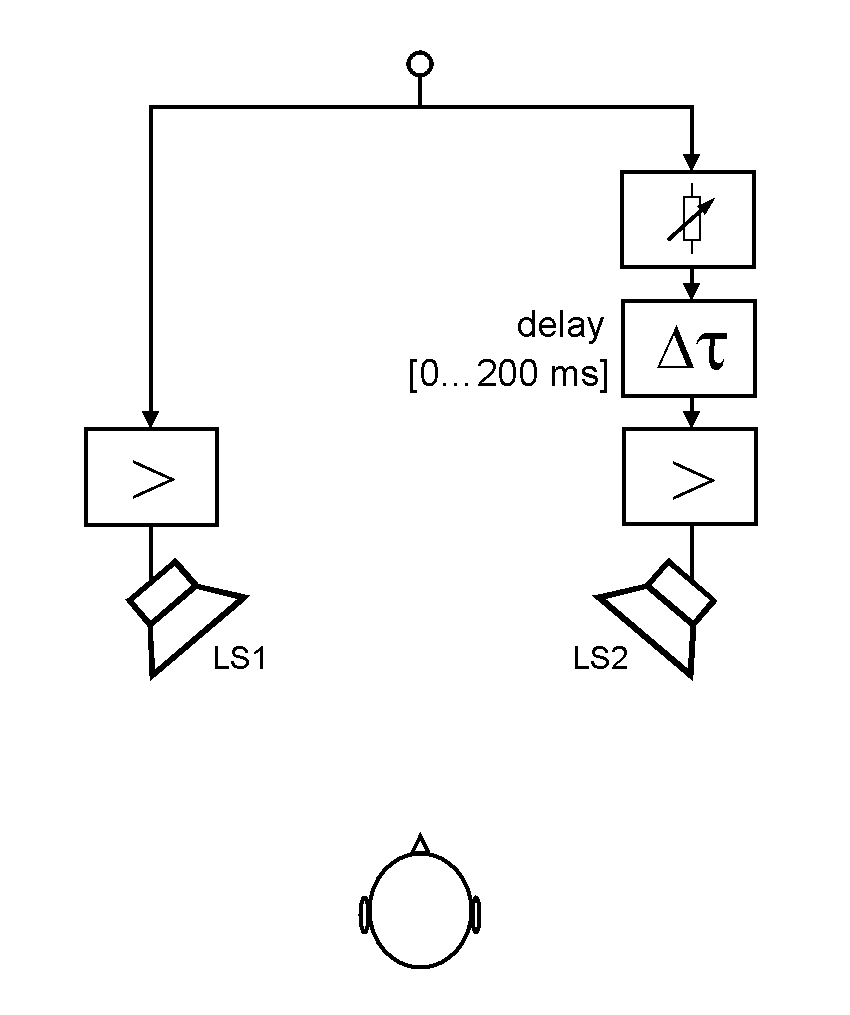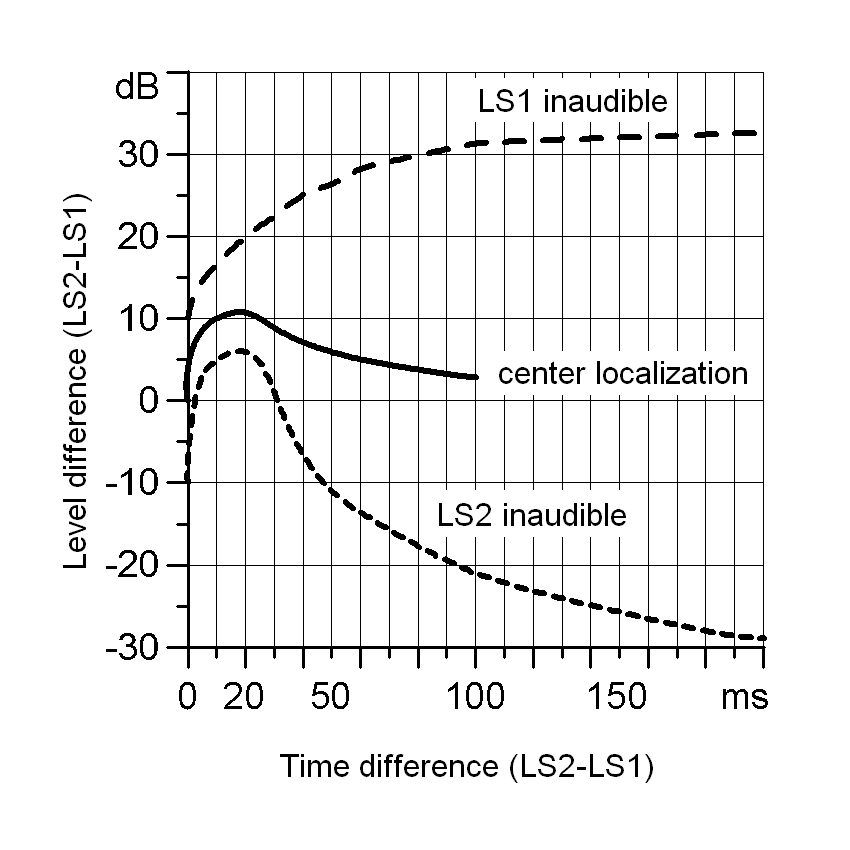Law of the first wavefront / Haas Effect
Hearing's ability to localize a sound source in a closed space is affected by the space's reflections. However, experience show that even in a room with many reflections – and thus a long reverberation time - it is possible to localize a single sound source even if the sound energy of the direct sound is much smaller than the energy of the reverberant sound field at the position of the listener. This phenomenon is called "The law of the first wavefront" and first described as such by Lothar Cremer in 1948.
A study carried out by Helmut Haas in the 1950'es has become important background information in understanding how the hearing system perceives the combination of direct and delayed sounds.

Figure 1 This is the basic setup for Haas' experiment. Both loudspeakers, LS1 and LS2, reproduce the same signal. However, the level and delay of LS2 can be controlled.
In this study, subjects were seated in an acoustically damped room in front of two loudspeakers (LS1 and LS2). The loudspeaker placement was similar to a stereo setup. However, the listening angle was 80 degrees. A speech signal (approximately 5 syllables per second) was reproduced by both LS1 and LS2. It was only possible to change the level and delay of the sound of LS2. The level of LS1 was fixed at approximately 50 dB SPL.
When changing the level and delay of LS2, the subjects' task was to determine either of these three: LS1 was inaudible, LS2 was inaudible, or the auditory event was localized in a direction right between the two loudspeakers LS1 and LS2. In the figure below, the main results are shown. In electro-acoustic applications, the lower curve is the most interesting. It shows that if the sound from LS2 arrives between approximately 5 and 35 ms later than the first arrived sound (from LS1), then the level of LS2 can be up to 5-7 dB louder than LS1 without being audible. This is often referred to as the Haas effect.

Figure 2 These curves represent the result of the experiment, the level difference between LS1 and LS2 (LS2-LS1).
If the delay exceeds 32-50 ms (depending on the type of signal reproduced), the delayed sound is perceived as an echo. It is easier for the ear to detect echo effects on impulsive/percussive sounds than more sustained sounds.